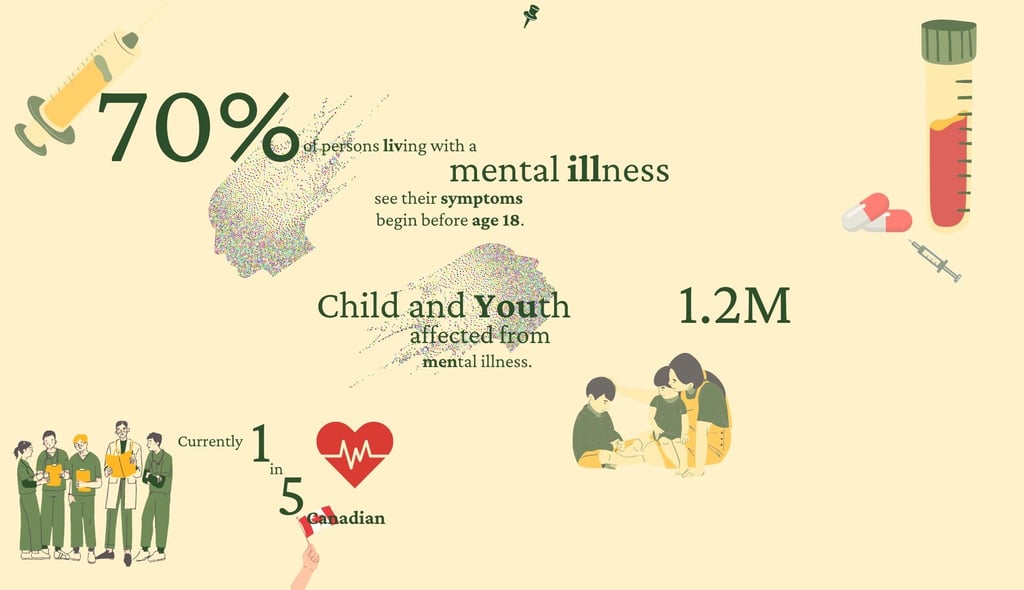
Why Canada Must Prioritize Youth Mental Health?
Is the system really broke?
MENTAL HEALTH
Deepak
6/16/20251 min read



source: statscanada.ca
DID YOU KNOW?
A Growing Crisis We Can No Longer Ignore
Most mental illnesses—including depression, anxiety disorders, ADHD, and bipolar disorder—begin during adolescence. If left undiagnosed, they often worsen with age and can affect school, relationships, and work.
1.2M is not a small number.
That’s more than the entire population of Calgary under age 25. It includes children from all backgrounds, socioeconomic levels, and provinces.
According to the World Health Organization, globally, 1 in 7 adolescents aged 10–19 experiences a mental health disorder. Suicide remains the fourth leading cause of death among 15–29-year-olds (WHO, 2021).
Why It Matters Now More Than Ever?
The pandemic worsened mental health outcomes.
Lockdowns, school closures, and social isolation led to a surge in youth anxiety and depression. A study by CMHA (Canadian Mental Health Association) reported that 40% of youth said their mental health had deteriorated during the pandemic.
Mental health services are still lacking.
Despite the need, only 1 in 5 children who need mental health services actually receives them (Canadian Paediatric Society).
What Needs To Change?
Parental and Peer Awareness
Parents, especially, should remain open to exploring all available mental health options—even if it means investing more in care.
No one should be denied support simply because they lack insurance or financial resources.
Access To Therapy
In Canada, access to mental healthcare remains a challenge—largely due to a shortage of qualified medical practitioners. Even when professionals are available, long wait times and limited appointment slots create significant barriers for those seeking timely help.
One practical solution is to launch public outreach campaigns with dedicated mental health teams. These teams could assess individuals’ mental well-being in accessible settings—like schools, community centers, or workplaces—and offer quick, evidence-based lifestyle adjustments.
The average wait time to access a psychologist in Canada is 6 months or more in some regions
(Source: Canadian Institute for Health Information).
Looking For Quick Lifestyle Changes?

Natural Healing
Time to say good-bye to your pills.
Support
Connect With Us
info@thecatalystcare.com
+1519-957-2342
© 2025. All rights reserved.
Disclaimer: The information provided on this website is for general informational purposes only and does not constitute legal medical advice. Our advice is solely based on our research.